One ... pause ... keep pausing ... two. No, no, wait. I can feel and hear the early stages of a gear-crunch starting to build. Better to go back to the start and try again. A quick dip of my right toe – which is about all of my foot that I can fit on the tiny accelerator pedal – and a quick blast of RPM, and the process begins again. One ... pause ... pause ... wait for it ... two. Clunk. Fourth gear slots home and we can begin to pick up speed once again. Changing gear in a 1926 Austin 7 takes rather a lot of concentration.
What am I doing trying to manufacture clean, un-crunchy gear changes in a near-century-old small car? Simple: I am travelling back in time. Normally, time travel and cars means getting hold of a DeLorean, but there are simpler and, arguably, more aesthetically pleasing ways of using four wheels to reach the past. You could take part in the International Gordon Bennett Rally, held annually in the environs of Carlow and Kildare.
This year was the 48th running of the event, and it drew almost 100 pre-1930 cars of varying sizes, styles and power outputs to the Mount Wolseley Hotel in Tullow, Co Carlow. This touristic edifice is yet more evidence that there is more to the history of motoring in Ireland than many would think.
Perhaps it’s unsurprising that, given our traditionally tax-’em-till-they-squeak national approach to cars, and the fact that such a taxation regime – added to which our insurance industry – has meant that few people in Ireland could ever afford more than pretty basic transportation, there is actually a rich seam of motoring and motorsport history in the country.
READ MORE
The Mount Wolseley is partial proof – the name refers to the same Wolseley family that was a pioneer of early motoring, and whose badge would go on to adorn some of the most famous cars Britain would produce, at least until the belligerent behemoth that was British Leyland mismanaged many such brands into extinction.
In the heart of the rolling hills and drumlins of Co Carlow, the Wolseley name and brand were at the epicentre of one of the most significant events in motor racing history: the 1903 Gordon Bennet race.
A little background. Before 1903, the big international motor races, effectively the distant forebears of modern Formula 1, were hell-for-leather city-to-city races, which culminated in the horrific Paris-Madrid race, stopped before the first day was over such was the deathly carnage among competitors and spectators alike. It was the race that claimed the life of Marcel Renault – yes, that Renault – among others.
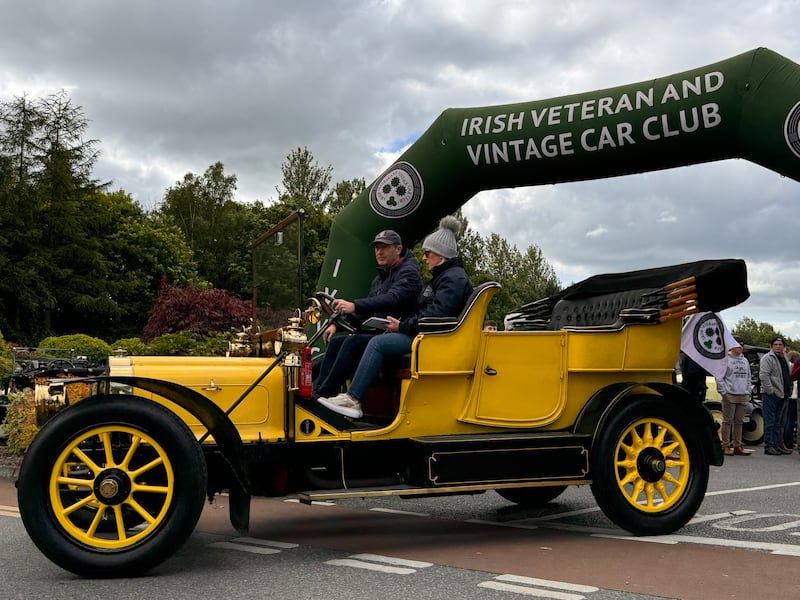
With such appalling death and destruction, motor racing had to change and change fast. James Gordon Bennett, millionaire publisher of the New York Herald, had stumped up the money to inaugurate a series of international motor races, both as useful publicity for his paper and as a way to stimulate car design. In 1902, running between Paris and Innsbruck, the Gordon Bennett Cup race had been won by Selwyn Edge of Britain, driving a Napier racing car. Eurovision-like, the winners of the event were duty-bound to hold the next event.
There was, however, a problem. Laws in the UK prevented roads being closed off for motor sports, so eyes turned west to Ireland. A law – the Light Locomotives (Ireland) Bill – was passed, and with the enthusiastic support of no less than the bishop of Leighlin, a closed circuit of public roads was laid out between Carlow, Athy, and Stradbally.
It was the first time that a big international motor race would be held in such a style. Locals were hired as marshalls for crowd control, men on bicycles would act as “safety cars” to guide the competitors at slow speeds though the towns on the route.
It was also the race where Racing Green was invented. Having run in a sort of olive-green colour in the 1902 race, the favourite Napier cars were painted in “Shamrock Green” as a salute to their Irish hosts for the 1903 event, a colour that would go on to become known as British Racing Green, but which really ought to be Irish Racing Green.
Since the 1970s, this epic event has been commemorated by the International Gordon Bennett Rally, run by the Irish Veteran and Vintage Car Club (IVVCC) supported by the likes of Chubb Insurance and Barrett Insurances, and while there are many spin-and-a-picnic classic car events around the world, this one is still a genuinely competitive event – not in terms of speed, of course, but there are sections along the route that must be driven at a precise average speed (usually 18mph or 24mph – no kilometres here, thanks – depending on the car) and navigators must find their way using a road book of Tulip Notes, which would be familiar to rally co-drivers from the 1970s. It’s a pleasant day out, but also one fraught with the sting of competition.
Thankfully, I have a secret weapon alongside me – Ray, my 13-year-old son, who in spite of never having even seen a Tulip Note before the event, quickly has the road book sussed, and using his trusty Casio watch, is soon timing our progress through each regularity section with the precision of a junior Luis Moyà or Nicky Grist.
Not that we are travelling at Carlos Sainz nor Colin McRae pace. “Our” little Austin 7 tourer has been loaned to us for the event by IVCC president Declan Grogan, who is keen to encourage those not old enough to remember when Wolseley was still a car brand, and not a hotel, to get involved.
Parked up at one point, on a sunny street in Moone, Grogan tells me the tale of a former entrant: “He loved his car, but too much. Wouldn’t let his kids near it, for fear of them damaging it. But, sure, a broken car can be fixed but what’s happened now? He’s passed on, the car is still sitting there, and his kids have no interest in it. We need to encourage a bit more interest in the history of these cars and these events.”
The diminutive Austin Grogan has entrusted to us is a hugely significant car. When this little red one was built in 1926, it would still be almost a decade before production of the model would start in Ireland, courtesy of the Lincoln and Nolan company.
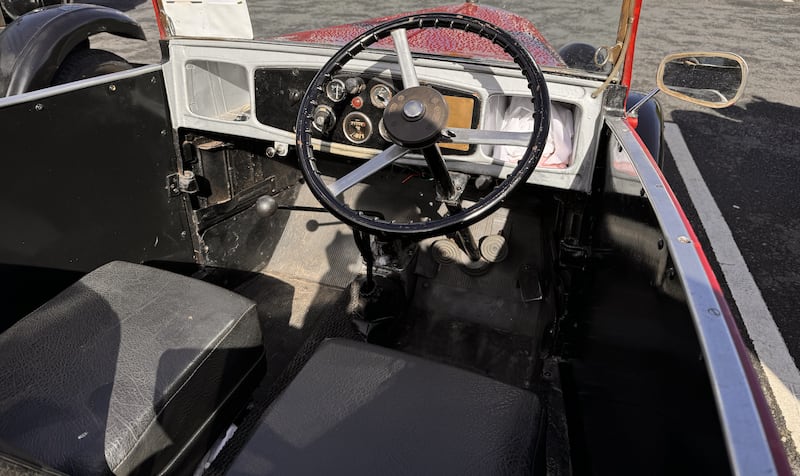
Nonetheless, the 7′s influence on the history of motoring is huge. It was one of the first (possibly the first) to lay out its controls in a manner we would all recognise today, with a gear-lever in the middle, and the clutch, brake, and accelerator pedals laid out left to right. Its little 750cc four-cylinder engine – officially rated in its day as having 8hp, but actually producing about 10hp in modern terms – would go on to form the basis of postwar club motorsport, and would be used by the likes of Lotus’s Colin Chapman – arguably the greatest racing car designer of them all – in his early cars.
Right now, I’m less worried about the 7′s historical significance and rather more about not crunching those tiny, jewel-like, gears as we make our progress up towards Stradbally and back again. Thankfully, the day is gloriously sunny so the lack of a roof doesn’t bother us, and the Austin’s slow speed – we’re in the 18mph average class – means that there’s plenty of time to take in the stunning countryside, and plenty of windy back roads from which to admire it.
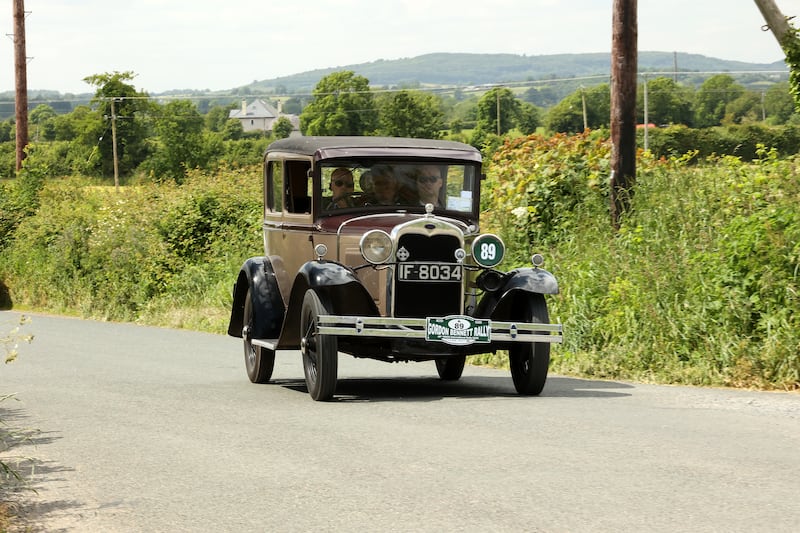
Those 1903 Gordon Bennett racers faced far stiffer challenges, from unmade gravel roads to steep ascents such as the famed Moat of Ardscull. It also rained on the day of the race, which potentially handed an advantage to the eventual winner, Belgium’s Camille Jenatzy – known as The Red Devil for this flaming beard and hair – who drove a Mercedes-Simplex.
Jenatzy said he preferred the Mercedes, less powerful than the favoured Napiers, because it allowed him to push it harder more of the time. It worked. The Napiers north crashed out – thankfully, without serious injury. Indeed, the 1903 Gordon Bennett was one of the first motor races in which there was no serious injury nor death. Jenatzy’s win would go on to be enormously significant – the first international racing win for Mercedes, a company that would become synonymous with world motorsport at the highest level. Jenatzy’s name really should be spoken of in the same breath as Fangio, Lauda, Schumacher and Hamilton.
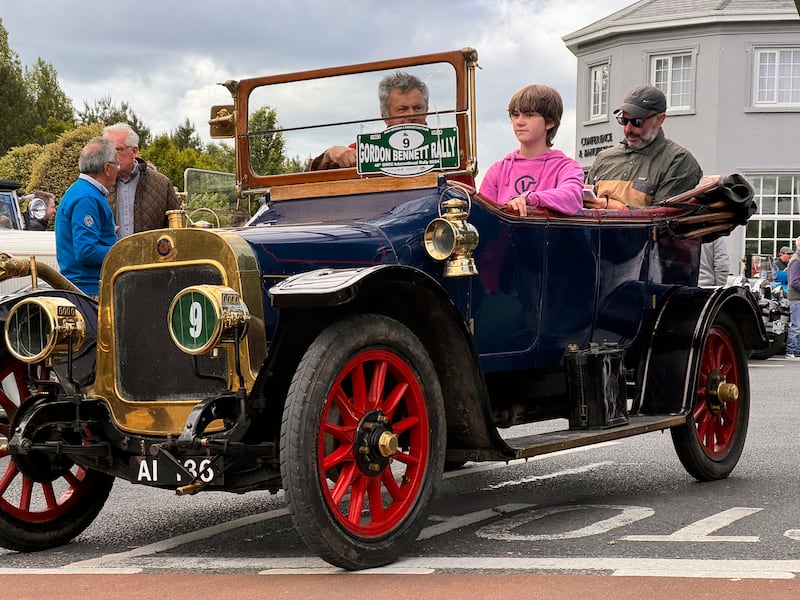
We’re in no danger of beating Jenatzy’s average speed of 49mph, nor his claimed top speed of 65mph. The little Austin is all done at about 40mph on the surprisingly accurate rotary speedo, but mostly we’re cruising along far slower than that, both to keep to our average speed and to allow time for the concentration needed for gear changing. The Austin has surprisingly quick, sharp steering, although it definitely prefers left-handed corners to right-handed ones, and the brakes are really more of a suggestion than an actual component.
The competition element of the event is enough to prevent us becoming bored, and indeed to prevent us lollygagging too long at our coffee stops, as Ray is strict about keeping to our departure and regularity start times.
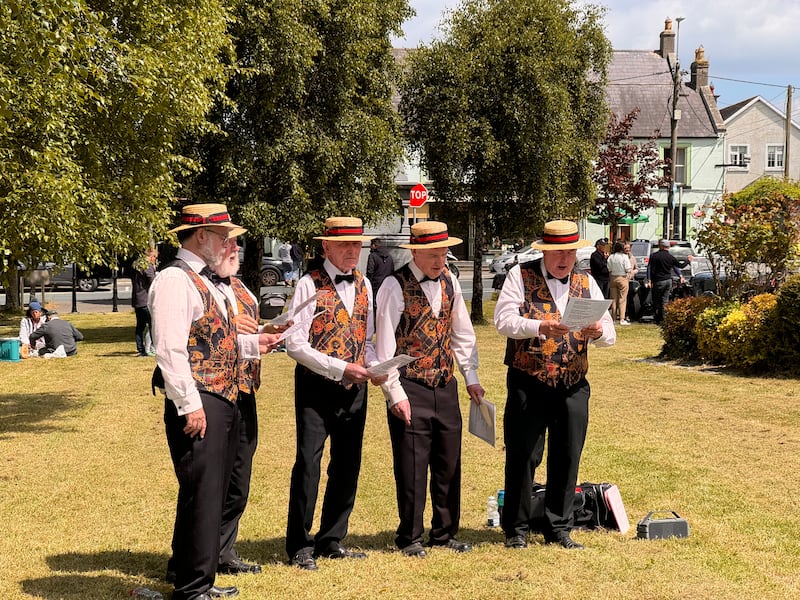
In the end, his efforts don’t go to waste – we finish 21st out of the almost 100 cars in the event, and Ray wins the Spirit of the Event trophy for his obvious hard work in the left-hand seat. We even finish ahead of Alec Poole, the great Irish racing driver and 1969 British Touring Car champion, driving in his own Austin 7 Saloon. Not ever day you can say you’ve finished in front of a champion, although Poole is clearly considering asking Ray to navigate for him next year, certain that the brilliance in our Austin is not in the driver’s seat.
History combined with pleasure combined with motor sports combined with the challenge of timing those gear shifts. There are few better ways of spending a day.
With many thanks to Declan Grogan, Alistair Chambers, the IVCC, Chubb Insurance, and Barrett Private Insurances
- Sign up for push alerts and have the best news, analysis and comment delivered directly to your phone
- Join The Irish Times on WhatsApp and stay up to date
- Listen to our Inside Politics podcast for the best political chat and analysis





















